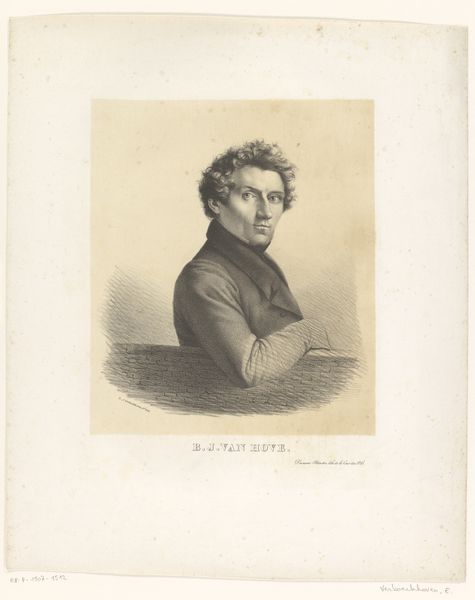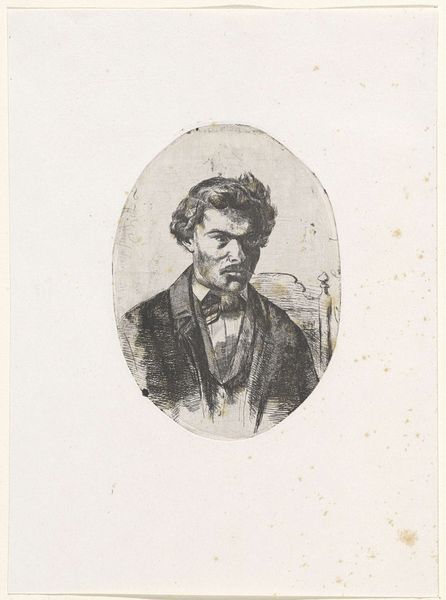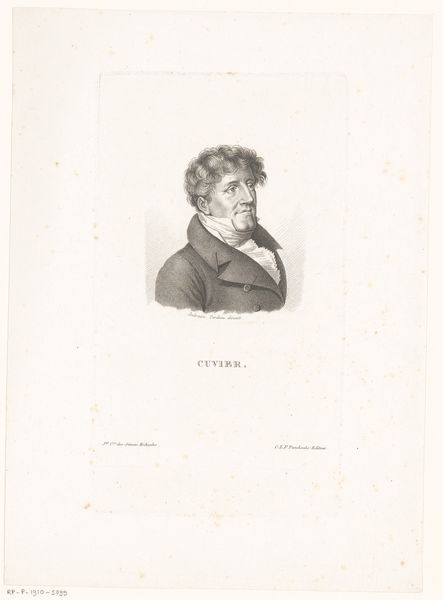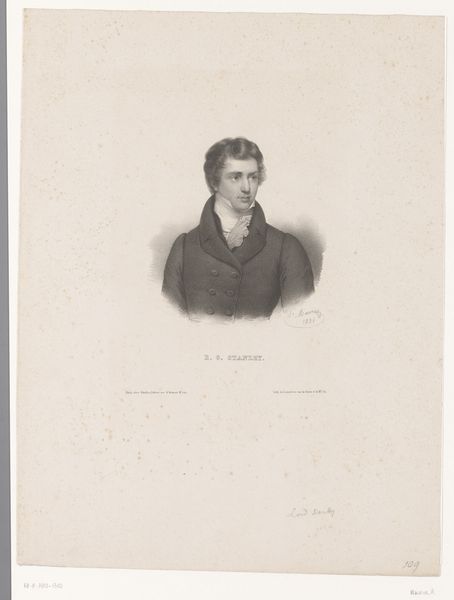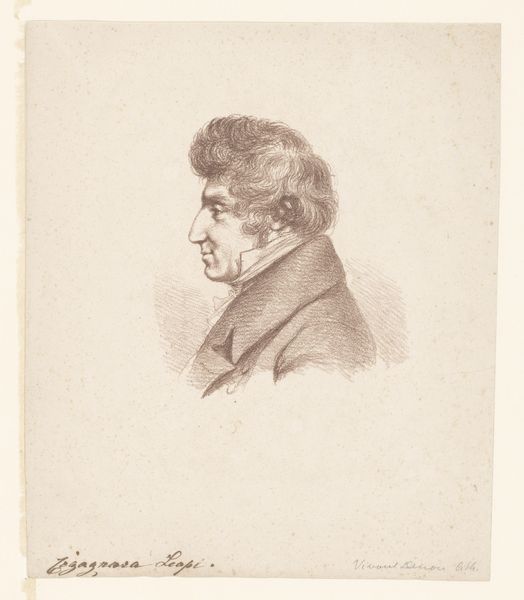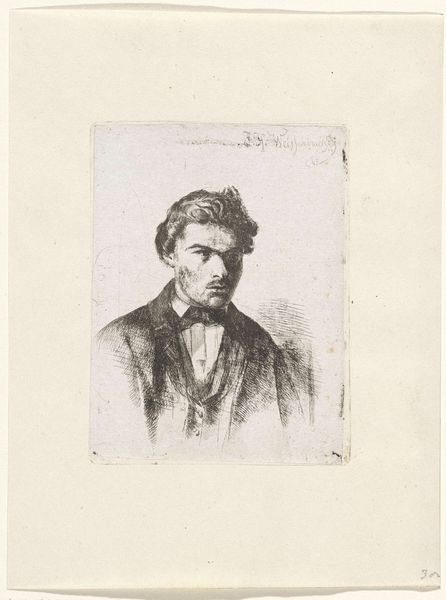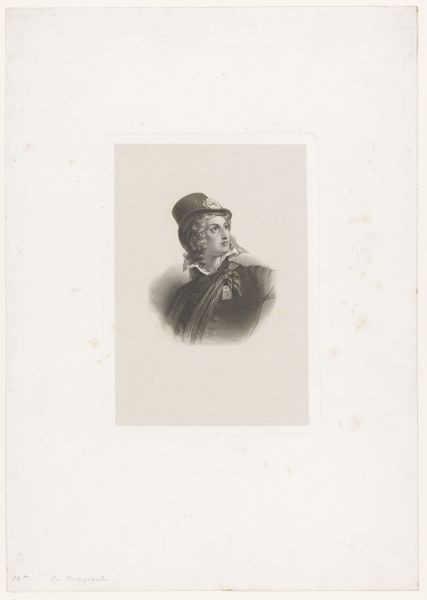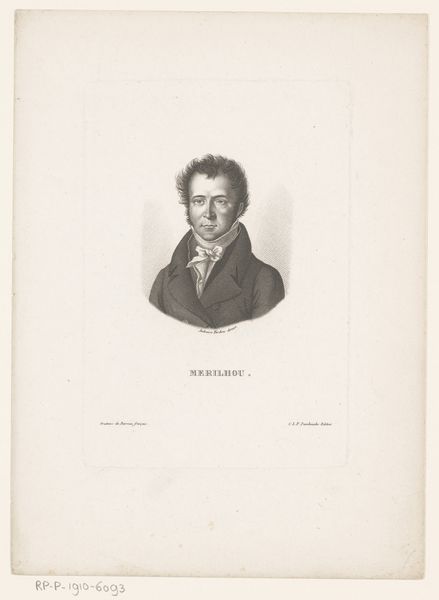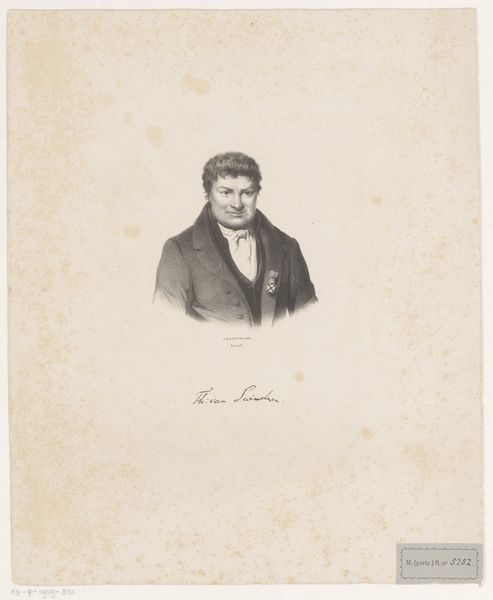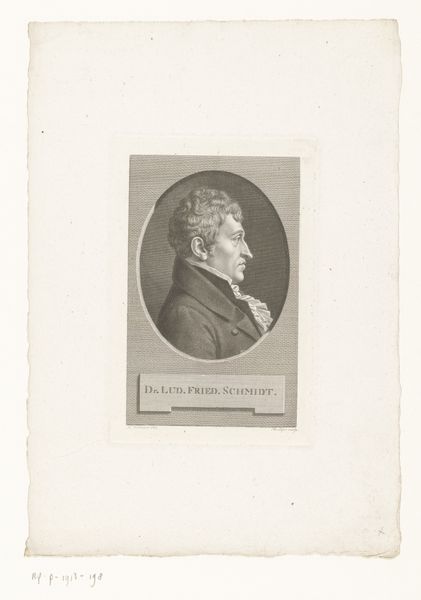
drawing, paper
#
portrait
#
drawing
#
paper
#
romanticism
Dimensions: height 549 mm, width 355 mm
Copyright: Rijks Museum: Open Domain
Curator: Before us, we have Eugène Verboeckhoven's "Portret van Joseph Charles Cogels," a drawing rendered on paper in 1827, currently held in the Rijksmuseum collection. Editor: The gaze is intensely penetrating! There's an austerity here, even a hint of melancholy. And look at the light catching those locks of hair. Curator: The Romantic style certainly lends itself to drama. The soft shading accentuates the planes of Cogels' face. The controlled lines give shape to the somber mood; note the composition of his tailored jacket with its subtle off-white underlayer shirt. The image itself resides centered, surrounded by a stark paper medium with simple title attribution just below, thus, Cogels becomes a universal everyman during this historical period. Editor: One wonders about Cogels' life during the period; considering that the after-effects of the Napoleonic era and its effects on ideas of governance continued for years in Europe. Cogels appears as a bourgeois whose life was inevitably determined by his time. How did he respond to societal currents and conflicts during those pivotal years? There's a social and historical context woven into every aspect of the sitter's presentation. Curator: Certainly. We can't ignore that portraits always mediate identity. But focusing on the image itself, consider the stark contrast in the artist's materials – between the relative subtlety and understatement with paper-on-pencil work versus more strident techniques, such as oils. Verboeckhoven utilizes simple mediums and, thus, underscores the value of minimalism. Editor: And what about the implications of portraiture at this moment? Photography was in its infancy. A commissioned portrait speaks volumes about status, privilege, and representation, or perhaps lack of accessibility among particular working-class subjects. This portrait gives off vibes of a changing and challenging era of Europe after so much revolutionary change, a statement of status with political dimensions. Curator: Perhaps. I find myself struck, however, by the very precision with which Verboeckhoven captures the human form using a medium that would seemingly impede detail; here the texture itself lends meaning. It provides a powerful visual metaphor for the complex individual represented before us. Editor: A compelling reminder, perhaps, of how art always intertwines personal experience with broader historical currents and collective ambitions. Curator: A beautiful interpretation to emphasize that artistic mediums may define our perspectives, but the subjective interpretation offers more enriching appreciation for artwork in total.
Comments
No comments
Be the first to comment and join the conversation on the ultimate creative platform.
